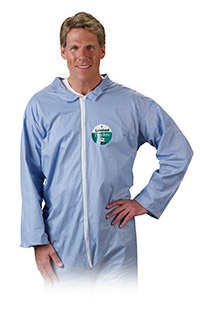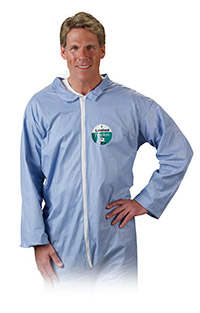
Check your disposable clothing labels for the following 3 factors to ensure you are protecting your most valuable assets.
- Know the maker of your garment. Manufacturers of FR disposable garments should be trusted to cite that accurate testing has been performed on the product’s fabric and that it meets appropriate standards for the workplace setting in which the garment will be worn. Many suppliers use over-seas contractors to produce products that claim to meet standards, but in actuality, could put your wearer at greater risk.fa
- Choose garments with fabric that will not melt. Standard disposables are made from polypropylene or polyethylene (or both). These are thermoplastic derivatives of oil, both of which are flammable materials that will ignite, melt and burn. Like standard disposables, it has been found that some FR disposable garments use inferior fabric that performs poorly in melt testing. Any fabric that melts and drips in the event of an electric arc or flash fire should not be worn in a situation where there is any risk for flame. Wearers should minimize risk and maximize protection by selecting a FR disposable that is proven to work in terms of not compromising effectiveness but ideally, contributing to thermal protection.
- Understand the garment’s arc flash, burn and repellency performance. FR disposable garments should be, but are not always, tested for melt, flame and repellency as they would be worn over a primary FR garment. Whether your needs are hazardous / non-hazardous chemical protection, flame, comfort & breathability or more, reliable testing on garments as they are worn in the workplace has been conducted to help wearers choose the best garment for their particular needs.
Testing results show that FR disposable garments can shield more costly primary FR clothing and provide greater defense against wearer injury. It is imperative that a purchaser of disposable secondary FR clothing has knowledge of the product’s testing results, actual standard compliance and fabric performance in a simulated workplace setting. There are resources available for safety managers and PPE purchasers to lean on reliable data, ensuring your product decision best fits the needs of your work environment.



